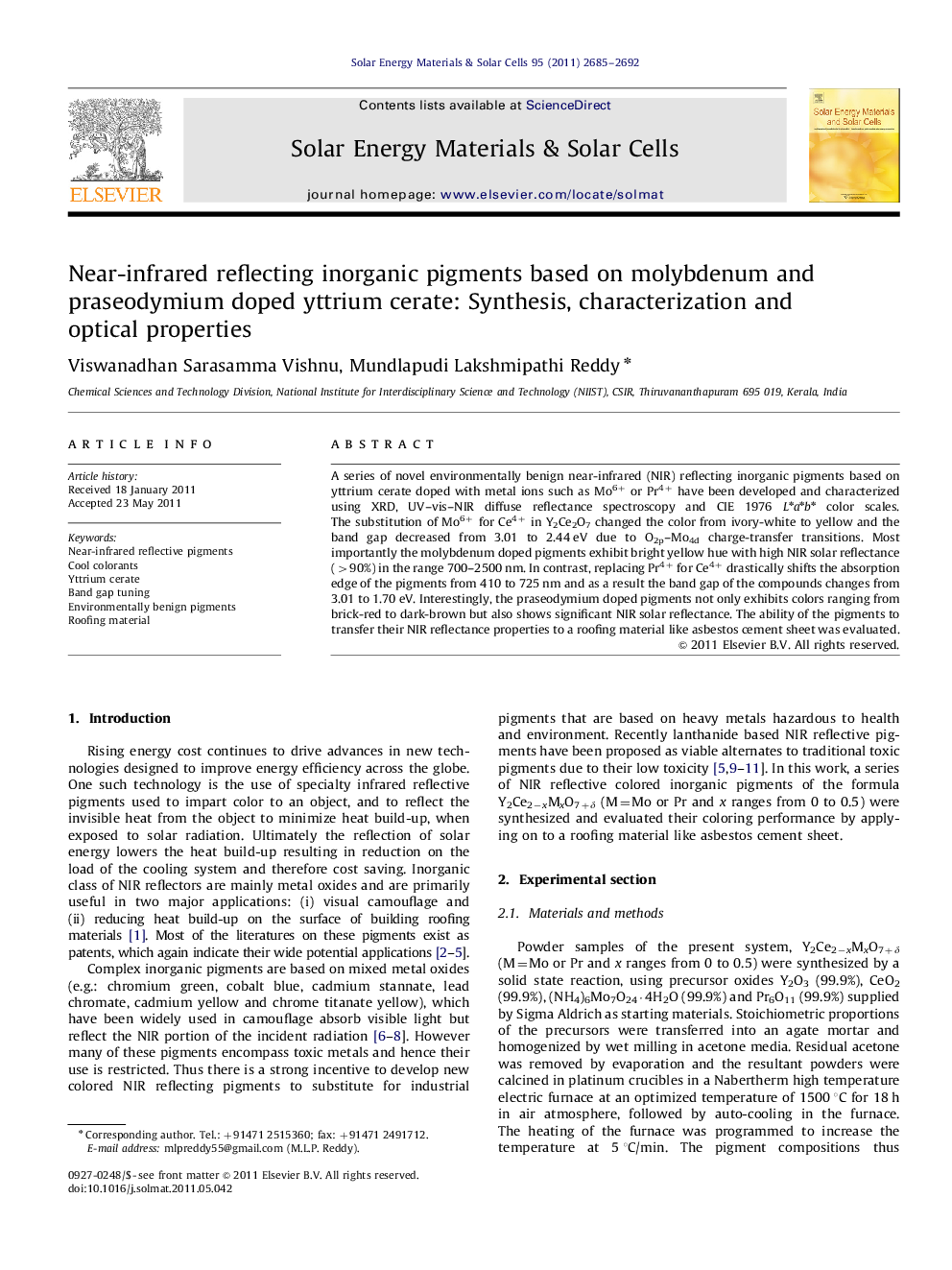| Article ID | Journal | Published Year | Pages | File Type |
|---|---|---|---|---|
| 78734 | Solar Energy Materials and Solar Cells | 2011 | 8 Pages |
A series of novel environmentally benign near-infrared (NIR) reflecting inorganic pigments based on yttrium cerate doped with metal ions such as Mo6+ or Pr4+ have been developed and characterized using XRD, UV–vis–NIR diffuse reflectance spectroscopy and CIE 1976 L⁎a⁎b⁎ color scales. The substitution of Mo6+ for Ce4+ in Y2Ce2O7 changed the color from ivory-white to yellow and the band gap decreased from 3.01 to 2.44 eV due to O2p–Mo4d charge-transfer transitions. Most importantly the molybdenum doped pigments exhibit bright yellow hue with high NIR solar reflectance (>90%) in the range 700–2500 nm. In contrast, replacing Pr4+ for Ce4+ drastically shifts the absorption edge of the pigments from 410 to 725 nm and as a result the band gap of the compounds changes from 3.01 to 1.70 eV. Interestingly, the praseodymium doped pigments not only exhibits colors ranging from brick-red to dark-brown but also shows significant NIR solar reflectance. The ability of the pigments to transfer their NIR reflectance properties to a roofing material like asbestos cement sheet was evaluated.
Graphical abstractFigure optionsDownload full-size imageDownload as PowerPoint slideHighlights► Designed non-toxic NIR reflecting inorganic pigments displaying various color hues. ► Doping of Mo6+ for Ce4+ in Y2Ce2O7 changed the color hue from ivory-white to yellow. ► Pr4+ substitution for Ce4+ in Y2Ce2O7 shifts the color from brick-red to dark-brown. ► The pigment coated roofing material exhibits high NIR solar reflectance.
